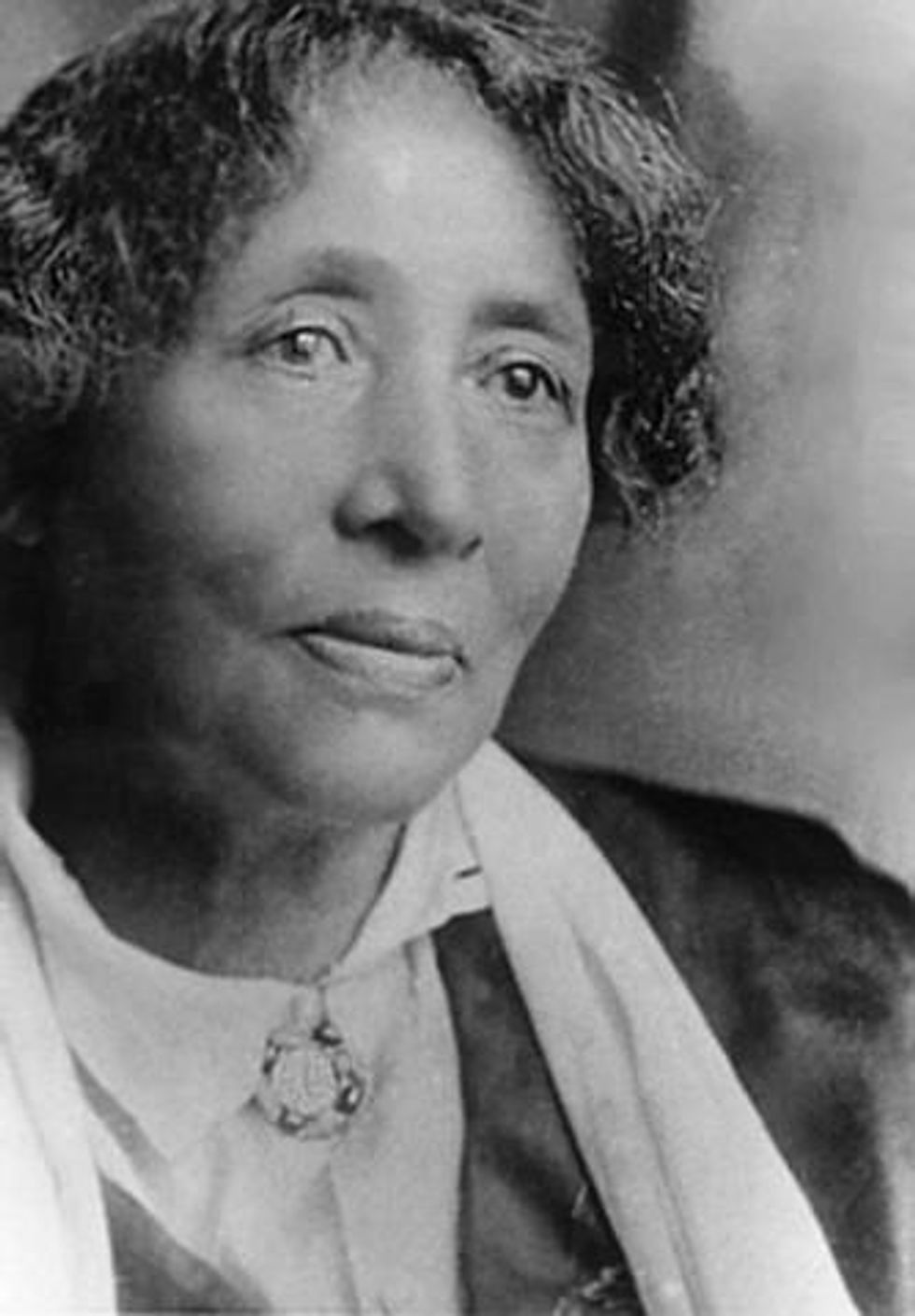Lucy Parsons: The Anarchist and Intersectional Feminist Who Inspired May Day
Workers shouldn't strike and go out and starve, but strike and remain in, and take possession, said Lucy parsons. Lifelong partner of Albert parsons, one of the American Labor Leaders, most associated with the founding of the American May Day tradition.

Lucy Parsons was of Mexican American, African American, and Native American Descent. She was born into slavery and she was an intersectional thinker and activist a century before the term was coined.
Her work after emancipation led her directly into conflict with the Ku Klux Clan and into a lifelong partnership with radical typographer and organizer Albert Parsons.
Lucy never ceased advocating for racial, gender, and labor justice, all at once, and she's part of the movement that won us the 8-hour day.
Parsons' husband, Albert, was one of the orators in Chicago, who attracted thousands to a rally near Haymarket Square in 1886, on behalf of worker rights. After police charged the crowd, and a stick of dynamite was thrown, he was one of those arrested and later hanged.
Lucy, it was, who led the campaign to exonerate the Haymarket martyrs, and then she carried on their work. Leading poor women into rich neighborhoods to confront the rich on their doorsteps. Challenging politicians at public meetings and marching on picket lines.
She was the only woman of color, and one of only two women delegates--the other being Mother Jones--among the 200 men at the founding convention of the IWW, the Militant Industrial Workers of the World. There, she was the only woman to give a speech. She called women the "slaves of slaves" and urged the IWW to fight for equality and charge underpaid women a lower rate for union fees.
She also called for the use of nonviolence and "occupation" of the means of production. You can see her principles in the sit-down strikes of the 1930s in Detroit, the Civil Rights Movement of the 50s and 60s, and the Occupy movement of today.
She died in 42 in a house fire at the age of 89, but in the celebration of May Day, her work endures. Long may her intersectional spirit live.
An Urgent Message From Our Co-Founder
Dear Common Dreams reader, The U.S. is on a fast track to authoritarianism like nothing I've ever seen. Meanwhile, corporate news outlets are utterly capitulating to Trump, twisting their coverage to avoid drawing his ire while lining up to stuff cash in his pockets. That's why I believe that Common Dreams is doing the best and most consequential reporting that we've ever done. Our small but mighty team is a progressive reporting powerhouse, covering the news every day that the corporate media never will. Our mission has always been simple: To inform. To inspire. And to ignite change for the common good. Now here's the key piece that I want all our readers to understand: None of this would be possible without your financial support. That's not just some fundraising cliche. It's the absolute and literal truth. We don't accept corporate advertising and never will. We don't have a paywall because we don't think people should be blocked from critical news based on their ability to pay. Everything we do is funded by the donations of readers like you. Will you donate now to help power the nonprofit, independent reporting of Common Dreams? Thank you for being a vital member of our community. Together, we can keep independent journalism alive when it’s needed most. - Craig Brown, Co-founder |
Workers shouldn't strike and go out and starve, but strike and remain in, and take possession, said Lucy parsons. Lifelong partner of Albert parsons, one of the American Labor Leaders, most associated with the founding of the American May Day tradition.

Lucy Parsons was of Mexican American, African American, and Native American Descent. She was born into slavery and she was an intersectional thinker and activist a century before the term was coined.
Her work after emancipation led her directly into conflict with the Ku Klux Clan and into a lifelong partnership with radical typographer and organizer Albert Parsons.
Lucy never ceased advocating for racial, gender, and labor justice, all at once, and she's part of the movement that won us the 8-hour day.
Parsons' husband, Albert, was one of the orators in Chicago, who attracted thousands to a rally near Haymarket Square in 1886, on behalf of worker rights. After police charged the crowd, and a stick of dynamite was thrown, he was one of those arrested and later hanged.
Lucy, it was, who led the campaign to exonerate the Haymarket martyrs, and then she carried on their work. Leading poor women into rich neighborhoods to confront the rich on their doorsteps. Challenging politicians at public meetings and marching on picket lines.
She was the only woman of color, and one of only two women delegates--the other being Mother Jones--among the 200 men at the founding convention of the IWW, the Militant Industrial Workers of the World. There, she was the only woman to give a speech. She called women the "slaves of slaves" and urged the IWW to fight for equality and charge underpaid women a lower rate for union fees.
She also called for the use of nonviolence and "occupation" of the means of production. You can see her principles in the sit-down strikes of the 1930s in Detroit, the Civil Rights Movement of the 50s and 60s, and the Occupy movement of today.
She died in 42 in a house fire at the age of 89, but in the celebration of May Day, her work endures. Long may her intersectional spirit live.
Workers shouldn't strike and go out and starve, but strike and remain in, and take possession, said Lucy parsons. Lifelong partner of Albert parsons, one of the American Labor Leaders, most associated with the founding of the American May Day tradition.

Lucy Parsons was of Mexican American, African American, and Native American Descent. She was born into slavery and she was an intersectional thinker and activist a century before the term was coined.
Her work after emancipation led her directly into conflict with the Ku Klux Clan and into a lifelong partnership with radical typographer and organizer Albert Parsons.
Lucy never ceased advocating for racial, gender, and labor justice, all at once, and she's part of the movement that won us the 8-hour day.
Parsons' husband, Albert, was one of the orators in Chicago, who attracted thousands to a rally near Haymarket Square in 1886, on behalf of worker rights. After police charged the crowd, and a stick of dynamite was thrown, he was one of those arrested and later hanged.
Lucy, it was, who led the campaign to exonerate the Haymarket martyrs, and then she carried on their work. Leading poor women into rich neighborhoods to confront the rich on their doorsteps. Challenging politicians at public meetings and marching on picket lines.
She was the only woman of color, and one of only two women delegates--the other being Mother Jones--among the 200 men at the founding convention of the IWW, the Militant Industrial Workers of the World. There, she was the only woman to give a speech. She called women the "slaves of slaves" and urged the IWW to fight for equality and charge underpaid women a lower rate for union fees.
She also called for the use of nonviolence and "occupation" of the means of production. You can see her principles in the sit-down strikes of the 1930s in Detroit, the Civil Rights Movement of the 50s and 60s, and the Occupy movement of today.
She died in 42 in a house fire at the age of 89, but in the celebration of May Day, her work endures. Long may her intersectional spirit live.

